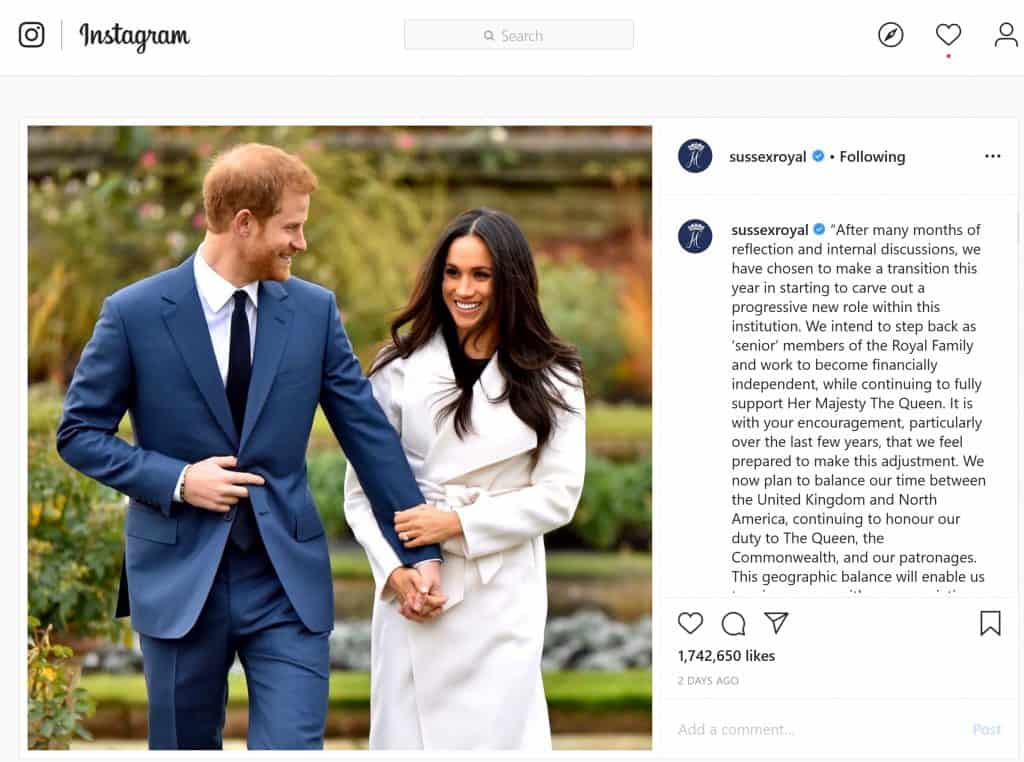
No More Fairy Tales
(Fairy Godmother works her magic to create Cinderella’s coach, still photo from Disney Cinderella)
In the fairy tale, a girl is plucked from obscurity and transformed into a captivating young woman whom the prince chooses to marry — and they live “happily ever after” to the tune of “bibbidy bobbidy boo…”
In real life, one princess is dead and another renounces her crown and flees the palace in search of a normal life.
As children we delight in the fantasy of palaces and pumpkin coaches, but in maturity we realize that most of celebrity life is a facade masking the spectrum of love, loss, joy, pain, sorrow and anger that shapes real human life and relationships. The trappings of the British Royal Family, in particular, are designed to maintain the fairy tale — the medieval costumes and beautiful carriages and stately processions and lavish palaces — but all come at huge expense not only financially (for the British taxpayers) but also personally for the inhabitants of the peculiar museum that is Buckingham Palace and its various other palaces where the members of the House of Windsor reside.
Last week, the Sussexes — Prince Harry and his wife Meghan Markle — announced on Instagram that they want out of the royal fairy tale. No royal seals or quill pens for them, they also launched a gauzy new website to present their ideas about a new way of living and working outside of the confines of royalty. Meghan reportedly flew off to Canada to be with their son Archie while Harry stayed on in England to work out the details with his grandmother, Queen Elizabeth, and his father Prince Charles. The news had the salutary effect in Britain of pushing Brexit off the front pages, and in the U.S. of giving us the cheerful thought that other countries also have spectacles of drama and dysfunction in high places.

The departure of Harry and Meghan from royal constraints — if they are able to achieve it — is the latest in a long-running drama about the relevance of the monarchy in the modern age and the deep unhappiness of the inhabitants behind the glory and glitz. Americans, having fought a bitter war to throw off the monarchy in the late 18th Century, have fetishized the royals ever since. When I was a schoolgirl, we used to giggle about Prince Charles and his big ears, but some of the girls in my class actually wrote him love letters. When he finally married Diana Spencer, broken hearts abounded. But we soon learned that there was no real love between then, and the ultimate estrangement, divorce, public recriminations and awful death of Diana seemed to augur the beginning of the end of the monarchy. But, no. The Crown proved stronger than the people inhabiting its chambers, and “the Firm” as Queen Elizabeth calls it rebounded to rebuild its brand, particularly relying on the vitality of the new generation of royals — Princes William and Harry. More recently, the truly ugly scandal surrounding the Queen’s son Prince Andrew and his relationship with the child abuser Jeffrey Epstein proved to be yet another blow to the monarchial fairy tale.
We may never know all of the forces that came to bear on the decision of Harry and Meghan to “step back as senior members of the Royal Family” but there is plenty of evidence in the public record about major stress points, most significantly, the issue of race. As many commentators this week have noted, the deeply racist treatment of Meghan Markle by the British tabloids and others played a large role. The fact that the Duchess is African American unleashed the kind of exceptionally ugly language and insinuations that lace through the rhetoric of white supremacists. Nearly two years ago, when Harry married Meghan with much royal ceremony, some people hailed the occasion as a signal that the monarchy was changing dramatically, that the British people were embracing the multi-racial and multi-cultural society that is the real England of today, that the couple would epitomize a new racial sensitivity. Those ideas proved as naive as the declaration that the election of Barack Obama would make America a “post-racial” society. Racism is a deep and pervasive sickness, rampant around the globe, and no single symbolic gesture can eradicate its deep roots in those parts of white society that cultivate the disease.

(Royal Family website photo, Queen Elizabeth)
If Queen Elizabeth, now 93, really wants to leave a remarkable legacy beyond longevity and defending tradition, she should seize the moment right now to make a clear and decisive statement denouncing the racism that has tormented Meghan Markle, cleaved the royal family apart and stained England’s global standing for generations. She could call out the ugly racial hatred that has fueled so much of the Brexit movement, the isolationist desire that is really an effort to return to the mythological “good old days” when Anglo-Saxons rode the heath and ruled the roost. She could make a public statement supportive of Meghan and Harry’s move to create modern, independent lives as a healthy step forward in a world that demands new exemplars of service, not old royals receiving flowers and curtsies from their subjects.
A smaller, humbler monarchy whose members are more productive in real service work would be a good outcome from all of the tragedy and drama of the last 50 years of the Windsors. The monarchy will surely go on, but it’s long past time to declare that we should have no more fairy tales about royal life.
